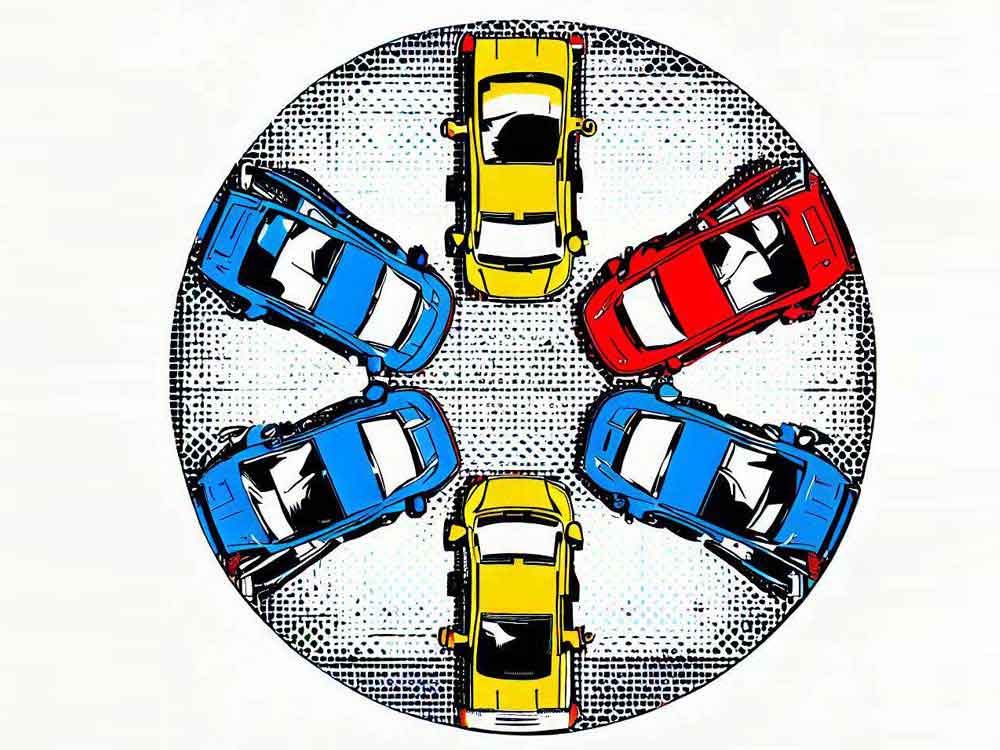Introduction
Navigating the world of car insurance can often seem like a maze of jargon and unknown terms. One term you might stumble upon is ‘car insurance groups.’
But what exactly does it mean?
And more importantly, how does it affect what you pay for your insurance?
In this article, we’re going to:
- Uncover what car insurance groups are.
- Dive into the factors that determine these groups.
- Unravel their importance in the grand scheme of car insurance.
Ready to save the most on your car insurance?
Let’s dive straight in!
Explaining Car Insurance Groups
Ever wondered why your friend, driving a similar car, pays a completely different premium for their car insurance?
It all boils down to UK car insurance groups.
In simple terms, each car model in the UK is assigned to an insurance group ranging from 1 to 50.
Group 1 is the cheapest to insure while Group 50 is the most expensive.
Quite a difference, right?
This system categorises vehicles based on several factors, which ultimately influence the cost of your premium.
Determining Factors of Insurance Groups
Now you’re probably wondering, “What determines the insurance group of a car?”
There are several factors that come into play.
The likelihood of damage, repair cost, the time it takes to repair, and even the price of the car when new can play a part.
High-performance cars might look great on the road, but they usually have a higher risk associated with them and thus fall into higher insurance groups.
But that’s not all.
Even smaller details such as the availability of body parts, braking systems, security features, and whiplash protection can affect a car’s insurance group.
A car with advanced safety features and security systems might end up in a lower insurance group, meaning cheaper insurance!
Importance of Insurance Groups
Why do these insurance groups matter so much?
It’s all about risk.
When you apply for car insurance, insurers assess the risk associated with insuring your car.
The higher the risk, the higher the insurance group, and ultimately, the higher the premium you’re likely to pay.
Knowing the insurance group of your car can give you an understanding of how insurers view your vehicle in terms of risk.
This knowledge can help you make more informed decisions when purchasing a new car or renewing your insurance.
In the following sections, we’ll delve deeper into how different specifications within the same car model can affect insurance groups.
Stay tuned. Knowledge is power, especially when it comes to saving money on your car insurance!
Delving Into Specifications
Can different specifications within the same car model affect the insurance group?
The answer is yes.
For instance, a model with a more powerful engine will generally fall into a higher insurance group than its less powerful counterpart.
Sounds fair, doesn’t it?
The same goes for other specifications like luxury features or safety enhancements.
The more “extras” a car has, the higher the potential repair costs, and hence, the higher the insurance group.
Safety Features and Their Role
One thing to note is the role of safety features and security measures.
Cars with advanced safety features or security systems can often be placed in lower insurance groups.
Why, you might ask?
Because these features can reduce the risk of accidents or theft, making the car less of a liability to insure.
Things like autonomous emergency braking (AEB) systems, advanced lock systems, or tracking devices can all influence your car’s insurance group.
The safer your car is, the less it could cost to insure!
Understanding Security Levels
Security is also a key factor.
Car security levels are categorised as E (exceeds requirements), A (acceptable), D (doesn’t meet requirements), U (unacceptable), P (provisional), and G (grey import).
Higher security levels generally equate to lower insurance groups, which in turn means cheaper insurance.
Isn’t that something to consider when purchasing a new car?
The Cheaper, The Better?
It’s worth noting that smaller, more affordable cars tend to have lower insurance groups.
While luxury vehicles and electric cars can fall into higher groups due to their value and specialised maintenance needs.
In a nutshell, the cheaper and simpler the car, the cheaper it might be to insure.
But remember, this is not a rule, just a trend!
Navigating Insurance Groups for Electric Cars
As electric cars become more popular, it’s worth understanding their insurance groups too.
The insurance groups for electric cars are calculated similarly to other vehicles but can be higher due to their specialised maintenance needs and performance factors.
So, while you might be saving on fuel, the insurance costs could be higher.
Something to keep in mind when considering going green!
Personal Factors Influencing Insurance Premiums
Beyond the car itself, did you know personal details are also taken into account when calculating your insurance premium?
Insurers consider factors such as your age, driving experience, home address, occupation, and previous claims history.
If you’re a young driver or have a history of accidents, you might find yourself in a higher insurance group.
Age and experience matter!
Location and Crime Rates
Ever thought where you live could impact your car insurance?
Well, it does!
Areas with high crime rates or a history of car thefts can increase your insurance premium.
In contrast, living in a low-risk area might just help you save some pounds on your insurance.
Insurance Categories
We’ve talked about insurance groups, but what about insurance categories?
These are also used to classify vehicles, particularly when they have been written off by an insurer.
Category A is for cars that are so damaged they can’t even be used for salvage – these are the ones you want to avoid.
Category B vehicles might have some usable parts, but the rest of the car should be crushed.
Categories S and N, previously C and D respectively, are for cars that have suffered some damage but can be repaired.
However, the cost of repair might be higher than the car’s value.
Wrapping It All Up
Understanding the world of car insurance can seem daunting, but it doesn’t have to be.
By understanding how car insurance groups work, and the factors that affect them, you can make more informed decisions that could save you money.
So next time you’re looking to change your car or renew your insurance, take a moment to check the insurance group.
You never know how much you could save!
For more information, check out our other guides:
- Finding Very Cheap Car Insurance
- Cheap Car Insurance for Women
- Cheap Car Insurance for Young Drivers
- Buy Our Cheapest Car Insurance
Ready to navigate the world of car insurance with confidence?
You’re well on your way with this newfound knowledge.
Stay informed and find the cheapest insurance for your needs!




